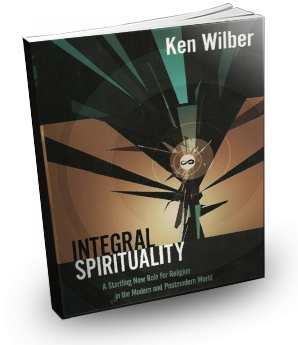Hey umop, thanks for taking the time to dig into this a little more deeply. I have a lot of associations with what you've written, but for the time being I need to keep it short, so I just have a couple of quick items:
1) in order to avoid asking a dumb question (or something you've already covered) I went out and did some quick searches on "metta," but I didn't come up with a specific meditation practice, just a basic working definition of acceptance and compassion. Do you concentrate on these feelings during your sitting? I just wanted a clearer idea of the intent you form when pursuing this specific line of feedback.
2) I think HEG and HRV have some correlation too. I'm finding in my HEG practice that the wider I can cast my net of awareness, be it bodily sensations, sounds, visual field (internal as well as external), etc., makes my HEG ratio go up significantly higher (for as long as I can maintain the effort) than just single-pointed focus as I was instructed to follow. I naturally fall into an HRV breathing pattern as I do HEG now anyway, but with just the HEG feedback I think there's a lot to be gained in awareness training, well beyond what I had in mind when I started.
3) I'm very intrigued by your mention of the celiac plexus. I hadn't heard that term before, but over the last year or so and particularly in the last few months I've come to regard the Enteric Nervous System as fundamentally important in mental processes, and have been trying to come up with a way to monitor it indirectly via NFB, since direct measurement isn't available with anything I can afford. I was going to ask you to monitor your gut sensations while working with your emotional awareness anyway, and then I got to your last paragraph and found it very exciting. I think, briefly, that there's a coordinated stimulus/response interplay of exchanges taking place between the head and the gut whenever strong emotions are felt, and particularly areas where those "knots" you describe can be felt to exert their influence.
My particular interest right now revolves around how personal inhibitions and aversions, for me at least, seem to either originate or resonate strongly in the solar plexus area (the lower dantian in Taoist terms) with a physical sensation of varying degrees of intensity. I wonder which comes first, but haven't been able to nail it down. A working analogy I have is that my brain is playing emotional chords in my gut like a sort of music (usually not nice music when I notice), or perhaps the other way around. I think there's great promise in learning to unravel those associations on an as-needed basis. Like if I'm thinking about going to exercise or get up and do something constructive, I'll feel a constriction in my gut that very quickly "talks me out" of doing it. Anyway, just wanted to bounce that off you and see what you think.
No problem, this is really the only place I know to talk about this stuff (in the context of these technologies, that is), it's really interesting seeing all of the directions that this can go in, even though I feel like I'm settling in on a specific approach I will probably be following for a while ('Metta', then Entropy/Samatha without an Object, then TAGsync/'Awareness of Awareness').
1) I haven't talked about that, and it isn't a dumb question. I guess why I haven't mentioned it is metta is one of those practices that seems pretty arbitrary in terms of how you approach it. The most common general method seems to begin with a mental or verbal recitation, repeated until you acquire a feeling of metta. Then you focus on the feeling, until it fades, and then you go back to the recitation, and repeat. I think there are some really good or compelling ones out there, but personally I just go with "May I be well, may I be happy, may I be free from suffering", because it's very easy to remember. Basically I just 'say' the words in my head, mindful of their meaning, while trying to project a very sincere intent. The 'near obstacle' is that you might confuse desire with an intent towards metta, so the other thing to be aware of is just doing that in a way that isn't attached to outcome. I think it's actually the sincerity of the intent that keeps it from becoming desire, like if you feel 'naked' as you're intending it, you don't really have any room to be forming any expectations or attachments, at least that's how it feels to me.
I do know that some teachers actually will not teach a rote method of metta meditation, the idea being that if it's more of a exploratory practice you can keep adjusting to what works best for a given moment instead of getting stuck with a particular method that may outlive its usefulness. I think there's some sensibility to that, the method I described above is basically just me taking an intuitive shot at metta practice, taking cues from some of the instructions I've read, and trying to get a feeling for what seems to work.
2) I find that Entropy training lends itself to a very wide net of awareness, same with TAGsync if you deliberately go in that direction (I try to) and I actually think it makes TAGsync work better, but I haven't really noticed that effect with this design. I haven't tried HRV or HEG with those other two, either. But what I do notice with this design, that's common to basically any time I start going in the direction of samadhi, is the boundaries of my body or awareness in general become very diffuse and there isn't much of a sense of locality. So there is a broadening, but it's not really a strong broad or spatial quality from what I've noticed, like how I might be more likely to characterize those other two. Personally I think a broader focus is actually better for training attention though, at least with the entropy design the quality it seems to locate is basically 'undistractibility', which is different from the very rigid connotations associated with "concentration". If you have a broader focus I think you can see more, like in regards to attention specifically those little 'proto-thoughts' on the periphery of your awareness, that you can then dissolve before they snag your attention.
3) From what I have heard, the celiac plexus actually relates to the middle dantian. I know the heart is often said to be the MDT, but one Taoist practitioner whose approach I have a liking for claims that it's actually the celiac or solar plexus (which innervates the viscera), and the heart is a related but separate energy center that is developed afterwards (the process of both celiac plexus and the heart being developed together being 'the mating of dragon and tiger', or something like that). It's actually the same guy that I was referring to on the 'breath harmonics' thing before, he goes into some detail about that, not just anapana/breathing, in this thread. He actually has a lot of really interesting posts across various parts of that forum, you may be interested in his stuff:
http://www.dharmaove...message/4418673
I was also thinking if the MDT is the celiac plexus, and it does innervate the viscera, if given your Taoist interest it might have something to do with the five organs and their association to emotions?:
http://www.universal...icle/smile.html
It may be a coincidence, but I know in the Yogic system the solar plexus and heart chakras are supposed to be the decidedly 'emotional' ones, and it seems like those two might agree across the two systems (Taoist and Yogic), because otherwise the systems have a lot of differences and seem more or less different.
It's strange though how much I agree with your observations. My inclination isn't really to go for the 'energy body' practices in general, because ordinarily they seem sort of tenuous to me. I tend to understand them as being cases of 'deferred cognition', or things like the enteric nervous system, etc, that all makes sense to me. But I only begin looking into them when my practice starts taking me in a direction where they become somehow relevant. It's kind of like what I mentioned about metta and that one teacher not recommending a 'formal' or rote method but rather remaining open to seeing what works, realizing that it may change. My worry with interoceptive objects like that is that I may center my practice around something inconstant or intangible, that I can't get a hold on later on and then I have to draw up a brand new map all over again. But it really seems like there's something to it this time.
For me I've always been pretty indolent, and a bit of a coward, or too eager to convince myself away from any kind of exertion or difficulty. In retrospect when that would happen there would be a feeling of unease in the celiac plexus. And placing a particular kind of awareness there (strong, sincere intent towards metta), makes me feel relatively courageous. This is a bit of a turning point for me, so I'm going to continue to see where this goes. It's interesting, because Entropy and TAGsync were relatively much more powerful for me, but this seems more beneficial for my individual temperament, so while I try to do all three every day, I find that if these days I'm going to fit only one of them in, it's this.
@umop
Good to hear from you again, these are some interesting insights you have developed  .
.
I am curious about the Entropy design, what kind of attention do you think it is developing? Is it a more narrow and pointed focus or more diffuse? Are you focusing in on some object of meditation or using some technique while doing this training?
What do you feel the effects are overall from the training? Is it cognitively enhancing? 
I am curious because trying to understand entropy has become a part of my research, I just read an article where they measured coherence and something called dimensional complexity (which I think is very similar to entropy, but I might be wrong of course). In any case they find increased coherence and decreased dimensional complexity during tasks for more intelligent subjects, but not during rest. So it seems that the brains ability to modulate the level of entropy to appropriate levels for task demands may be an important aspect of intelligence. In the article they also speculate that more intelligent subjects may have higher dimensional complexity at rest, and that this might be a sign of more diverse neural networks being activated, leading to a more creative mode of divergent thinking, at task though you need to only activate the specific networks that are optimal for the task so then it is best to reduce dimensional complexity, which will also increase coherence.
The researchers call this "order to chaos ratio in task-related brain dynamics", you can read about it here if you are interested: http://www.ncbi.nlm....pubmed/10533842
Some parts of that article seems to discourage entropy training as reduced entropy was related to higher intelligence (but only during task). But it might mean that you should traing entropy so the brain can gain more control of its entropy dynamics, would be interesting to see what you think about this. I am starting to think of it as training the brain to develop more state-flexibility so that you can switch between highly ordered, coherent modes of being when needed but also to be able to rest and be more creative.
I am also curious, have you tried alpha theta crossover protocols? I have found them to be different, and complementary to my other training. It can be an effective way of addressing these emotional knots. I have only tried 4 sessions so far, the first ones were just a bit relaxing for me but I was having trouble understanding the protocol and learning how to let go, I feel like I progressively learned this and my last session was very productive.
I found that reducing thinking and increasing just being open and feeling my body intensely would increase theta, I then started feeling warm all over my body and I focused in on this sensation, and this was like a key to bringing me deeper down into this state. I started re-experiencing some troubling and painful memories, usually when I think of these it will be from a 3rd person perspective and with low emotional connection, kind of just a cognitive understanding of the event. This time though I was deeply focused in my body and I could re-experience it in a bodily sense, a part of me resisted this but another part willed me on, this kind of felt similar to HEG training actually, it was just a complete determination, in any case I went ahead and for a time it was quite intense, but at the same time I felt calm, relaxed and safe so it was kind of like those old feelings could be dissolved into that relaxed state and I could release it.
After that I have experienced elevated mood and just feeling more at ease in general so I think it did something for me  . Now I think next time I will increase session length and try to go deeper.
. Now I think next time I will increase session length and try to go deeper.
Thank you crowstream. This thread is the place to be, imo.
When using Entropy I take a very diffuse focus, it sort of feels like occupying a 'mental field'. But it's empty or essentially void of content, and I don't really make it that way, I just find it, sort of like it's already there. I don't use an object at all. I think the attitude with Entropy training in regards to attention is that of 'undistractibility', and I think that's actually a better perspective to view attention training under. Because 'concentration' has a very top-down and powerful connotation, where you are trying to actively fill your awareness with an object, and I think this approach can actually obscure your volitions about what you're actively doing, and those volitions can be directly undermining your purpose. With this, everything is out in the open, because you aren't really 'doing' anything, so anything you might do to over-complicate the process becomes conspicuous. You're not necessarily consciously attending to anything, like even the spacious emptiness doesn't present a strong object of any kind, it's sort of just the stage that it takes place on. All you're really doing is noticing when your mind gets on a train of thought (marked for me by a reduction in entropy), then you just let go of that train of thought, and locate your mind again at the 'stage'. You just do that over and over, it's weird because the mental effort you're applying is very relaxed, most of the you're just 'letting go' of trains of thought, so it becomes really relaxing even though it requires a fair bit of vigilance. As you keep this up and your mind settles out, you can begin to 'anticipate' thoughts before they emerge as distractions that catch your attention. They're kind of like proto-thoughts, that you can notice the 'rumblings' of before they manifest into anything. This gets easier as your mind settles out, because the tempo that you can notice stuff at increases as your mind 'slows down'. So then if you keep this up, and notice the thoughts before they emerge, and let go of those, then your mind can relax even more, and this is generally when jhana starts emerging for me.
I found there to be some very impressive cognitive benefits. I discovered this type of training basically in the middle of this past school term, and what I'd notice after the days that I'd train is that I could pay attention to a whole lecture continuously. I'd notice my lapses in attention as they were happening, or briefly afterwards, and there was never the sense that I'd 'lose' my attention or have a complete lapse, I'd retain a continuity of attention I'm otherwise not used to. My attention was also very broad, I could pay attention to the lecturer, and everything happening around me (like the students in other desks looking around), all at once. I felt just really in possession of all of my faculties.
I've kind of given up trying to find studies on entropy that I can actually make sense of. Partly because it is a pretty complex mathematical derivation and my maths are poor, and I know some of the studies calculate it differently, so I don't really know how they compare in application or results, either.
But what I think the benefit of entropy is, is sort of the ability to 'untask'. I could see this perhaps not having the greatest application during tasks, but rather inbetween (or priming for) them. I think this is also why I find it to be very synergistic with TAGsync. It's kind of hard to explain, though, because in my experience I don't think it would necessarily present a problem on task, either, except that in a sense the two states are mutually exclusive. Like entropy is more a state of readiness or 'skillful apprehension', which just by definition stands in contrast to a state of action or 'deployment'. What I like about this protocol is that it clearly defines the sort of mental hinge between 'readiness' and 'deployment', and actually brings it under a degree of conscious control (because it usually isn't!) It's kind of hard to articulate, though.
But personally entropy training doesn't make me worry, because the skill-based part of training actually seems the most transparent of all of the stuff I have experience with, I find I always know what I'm doing when I'm training, and I have to be deliberately doing it or training doesn't go anywhere, so it's not really going to 'drive' my brain anywhere I don't want it to go. I would just try it for a bit and see if you can get a knack for the 'skill' portion, and then just see what effect it has. For me it's ostensibly good, if you have a really good session it is completely fascinating seeing how much you stay awake, while your mind essentially falls asleep. What I mean is your thinking just sort of progressively shuts down after a while, but you're still entirely conscious. It's a very interesting experience, extremely peaceful, and honestly I think it's a helpful mode of training for almost anything you may want to pick up, because the effect is that it's like it polishes your mind and makes it 'shinier', or it's sort of like a shower for your brain, it's kind of hard to explain though.
I have tried alpha-theta crossover protocols, but it was a long time ago when I didn't know what I was doing. If it's anything like HEG training, I just didn't know how to leverage benefit from it back then. That seems like it would be an extremely good compliment to what I'm doing right now, though, I think I'm going to look into them again.
Edited by umop 3pisdn, 20 December 2014 - 06:18 AM.
![]() .
.































 This topic is locked
This topic is locked





















